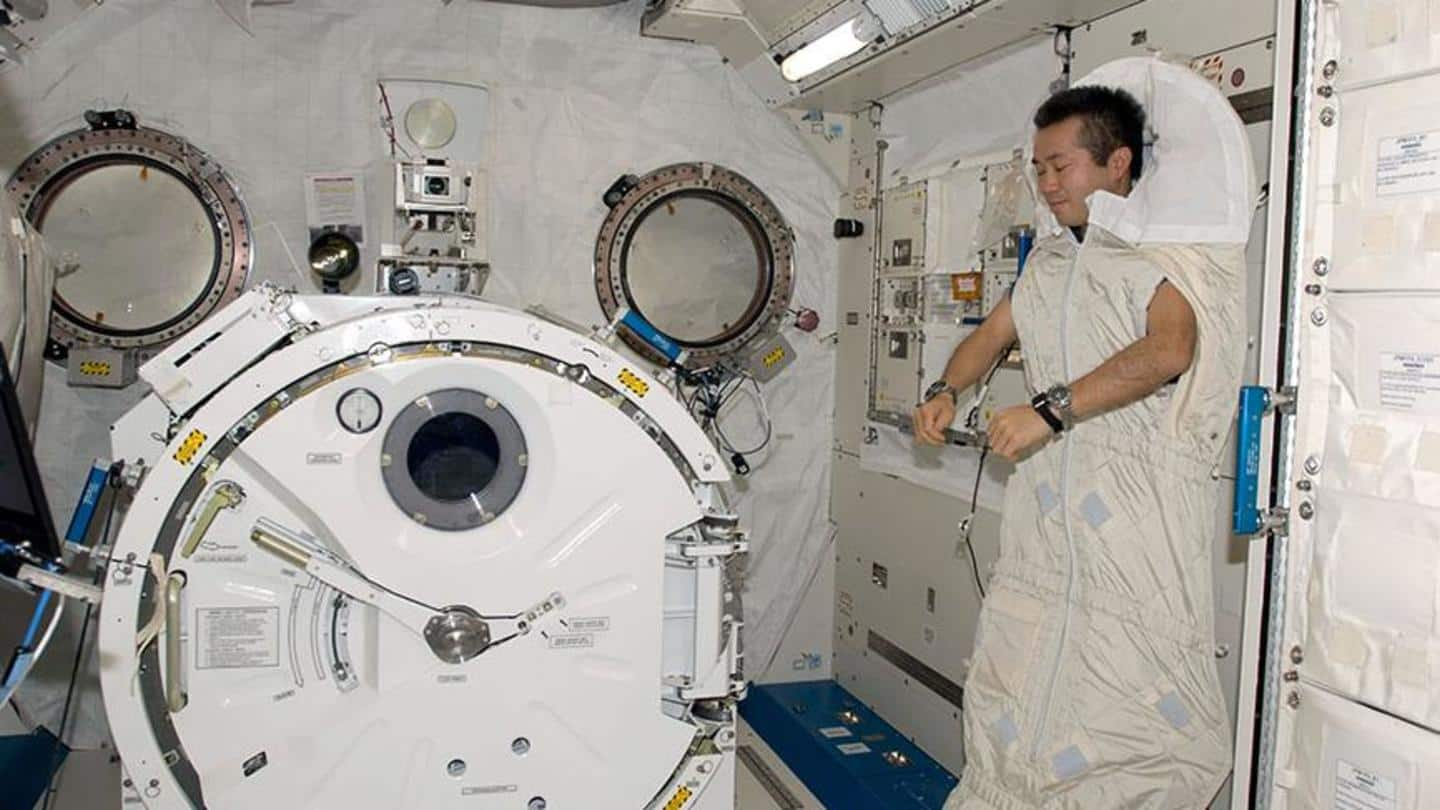
#NewsBytesExplainer: How do astronauts sleep in space at the ISS?
What's the story
Many people on Earth suffer from sleeping disorders and it becomes even more challenging in space. A lack of sleep might affect cognitive abilities and disrupt the body's circadian rhythm (biological clock). In space, sleeping problems might cause fatigue and accidents on the job, which might prove to be fatal. Thankfully, Astronauts have perfected the art of snoozing there. Read on to learn how.
Context
Why does this story matter?
Despite vast technological advancements, humanity is still guided by its need for food and rest. In space, where a single miscalculation by an astronaut can mean death for the entire crew, it is essential that astronauts get a good night's sleep. However, it is not easy to do so and they have to follow a whole lot of steps for such a simple function.
Sleeping pods
Sleeping compartments are the size of a telephone booth
The International Space Station (ISS) has a weightless environment where there is no real "up" or "down." Astronauts snooze in personal compartments the size of a telephone booth called "sleep stations." They contain a sleeping bag, pillow, laptop, lamp, air vent, and place for personal belongings. Those who want to sleep outside can secure their sleeping bag to the floor, ceiling, or wall.
Requirement
Sleep masks and earplugs are a must for snoozing
As there is no difference in a weightless environment, astronauts can many times be seen sleeping "vertically." Their sleeping bag has a rigid cushion to exert pressure on their back. Meanwhile, a sleep mask is also used to block the light as astronauts witness 16 sunrises/sunsets every day while orbiting Earth. Earplugs are also used to shut out the noise.
CO2 bubble
Astronauts sleep near an air vent to prevent brain damage
Astronauts are allowed to sleep for around 8.5 hours each day. However, many of them do so for only six hours as their bodies tire less in weightlessness. The Greenwich Mean Time (GMT) is used to maintain a regular sleep schedule. Also, astronauts tuck themselves near an air vent as the emitted carbon dioxide can form a bubble around their heads, causing brain damage.
Drugs
Medications like Zalpelon are the last straw
Astronauts suffering from sleep disorders can undergo sleep cognitive behavioral therapy (SCBT), which aids in relaxation and adhering to sleep hygiene. They can consume supplements of melatonin, a naturally-produced human hormone that regulates sleep. Medications like Zolpidem (sedative), Benadryl (over-the-counter antihistamine), and Zalpelon (sedative-hypnotic) are also administered to astronauts as a last resort. They are tested on every crew member prior to flight.